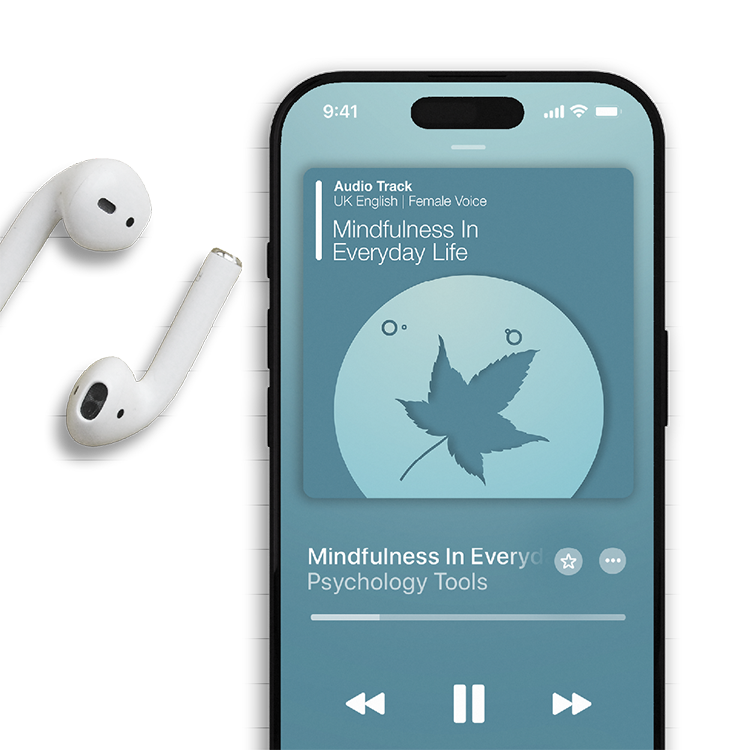Audio track (MP3)
A therapy audio track designed for skills development.
Audio script (PDF)
The script for a therapy audio track. Read along with an exercise, or record in your own voice.
This audio exercise bridges formal mindfulness practice with daily activities, offering a structured approach to cultivate mindfulness in real-world settings. Taken from the Psychology Tools For Mindfulness audio collection.

A therapy audio track designed for skills development.
To use this feature you must be signed in to an active account on the Advanced or Complete plans.
The script for a therapy audio track. Read along with an exercise, or record in your own voice.
To use this feature you must be signed in to an active account on the Advanced or Complete plans.

Mindfulness is a skill to help people foster a connection with the present moment. The Psychology Tools For Mindfulness Audio Collection offers structured, guided exercises based on evidence-based mindfulness techniques that help users cultivate present moment awareness and acceptance.
Mindfulness practice is a core component of several evidence-based therapies, including mindfulness-based cognitive therapy (MBCT), mindfulness-based stress reduction (MBSR), dialectical behavior therapy (DBT), and acceptance and commitment therapy (ACT). Across these models, mindfulness is used to enhance present-moment awareness, reduce experiential avoidance, and foster a more accepting relationship with thoughts and emotions.
Mindfulness in Everyday Life serves as a practical exercise for mental health professionals looking to incorporate mindfulness strategies within therapeutic settings. By guiding clients through mindful awareness exercises, it fosters a connection between structured practice and everyday life, helping individuals counteract 'autopilot mode'.
Just enter your name and email address, and we'll send you Mindfulness In Everyday Life (Audio) (English GB) straight to your inbox. You'll also receive occasional product update emails wth evidence-based tools, clinical resources, and the latest psychological research.
Working...
This site uses strictly necessary cookies to function. We do not use cookies for analytics, marketing, or tracking purposes. By clicking “OK”, you agree to the use of these essential cookies. Read our Cookie Policy